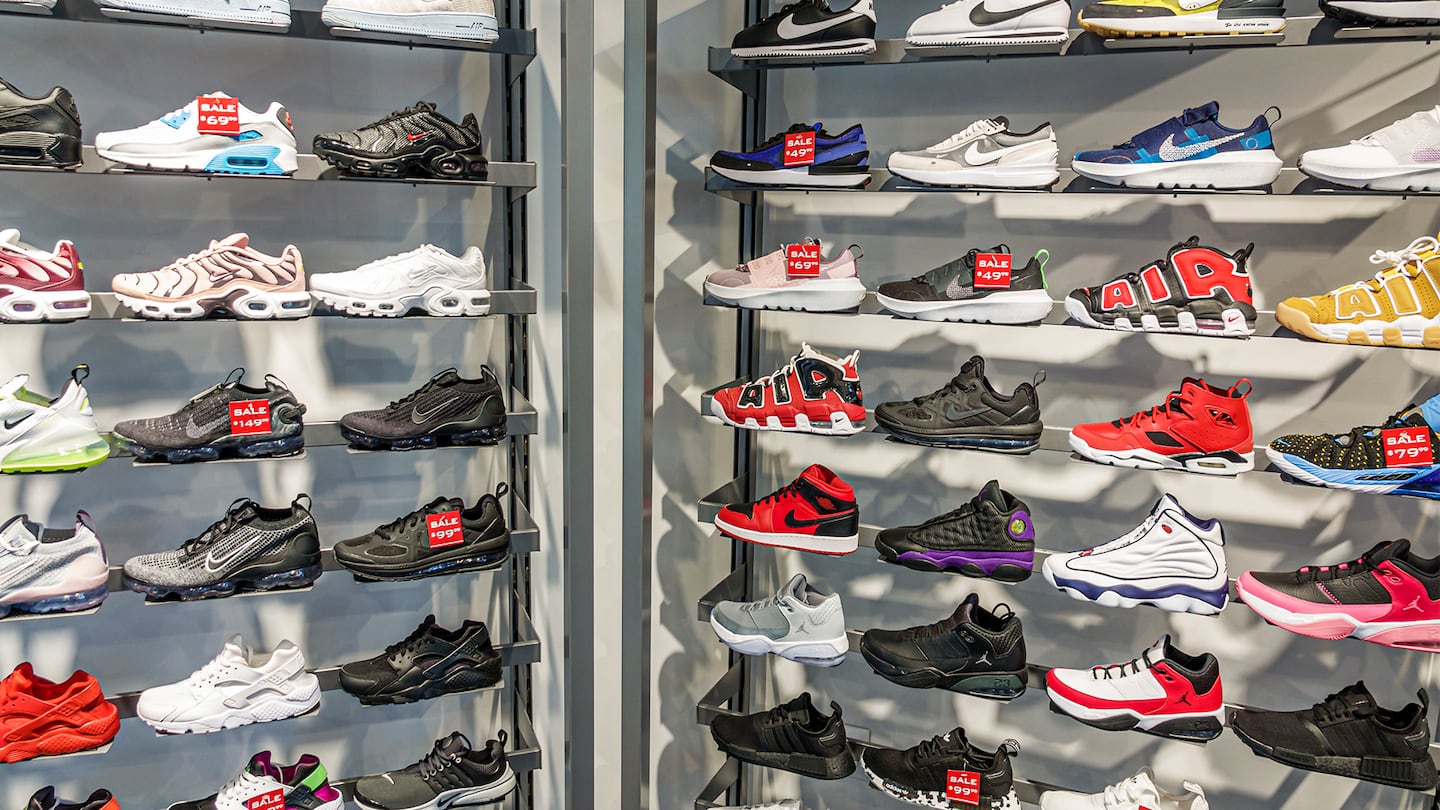
The Business of Fashion
Agenda-setting intelligence, analysis and advice for the global fashion community.

Agenda-setting intelligence, analysis and advice for the global fashion community.

Last fall, two of Europe’s largest sneaker marketplaces, Netherlands-based Restocks and France’s Kikikickz, filed for bankruptcy. To the casual observer, their failure appeared to come out of nowhere: Both companies continued to list Jordans and Yeezys for sale while churning out an endless stream of content on TikTok, right up until they shut down and sold off their assets to pay creditors.
To followers of the sneaker world, these platforms’ demise came as no surprise. For months, users of both sites voiced concerns over unfulfilled orders, unpaid refunds and overdue payments amounting to millions of euros. A Facebook group called “Anti Restocks.Net,” where people still share stories about the money and shoes they are owed, has 3,000 members.
The troubles at Restocks and Kikikickz weren’t isolated incidents, either. After a decade-long boom, the sneaker resale market is contracting. Nike has increased production of some of its most in-demand shoes, driving their value down in the secondhand market. Adidas has shuttered its Yeezy line, cutting off another critical source of supply.
Smaller resale platforms like Restocks and the private equity-backed Edit Ldn, which was sold in a fire sale last month, are being pushed out. The giants in the space — StockX, Stadium Goods and GOAT — have held their ground by diversifying into new categories, and through consolidation. GOAT’s acquisition of high-end streetwear platform Grailed in 2022 helped the platform become less reliant on sneakers, while StockX sells everything from trading cards to PlayStations.
ADVERTISEMENT
But they’ve not been completely immune to market conditions. In January, StockX laid off 40 employees; its chief marketing officer, Deena Bahri, also left as part of the restructuring.
In the near-term, the prospects for sneaker resellers aren’t good. In 2023, overall trade volume across the secondary market was flat, but if prices continue to fall, then resale stakeholders of all sizes will feel the effects, according to Eric Witschen, founder of Neustreet, a platform which aggregates data from the world’s largest resale sites, including StockX, GOAT, Stadium Goods and Flight Club.
“It’s been a lot of pain for people that are in this resale market,” he said. “Selling high volumes is meaningless if it’s no longer profitable.”
Reselling became a big business starting in the 2010s, as sneaker giants embraced the scarcity model, where they would release limited-edition shoes in small quantities to drive hype around their brands. Prices for rare Jordans and Yeezys climbed steadily, then spiked during the pandemic.
But the market peaked towards the end of 2022. A relentless parade of collaborations and unimaginative releases of minor variations on the same retro sneakers was creating fatigue among even the most avid collectors.
Then, all of a sudden, the sneaker giants ramped up production. In the past two years, Nike has pumped out Jordan 1s and Dunks like never before, and New Balance followed suit with its 550 silhouette. Adidas flooded the market with millions of Sambas and Gazelles — a move that helped the brand cash in on surging demand. Meanwhile, it abruptly cut ties with Ye in 2022, and began selling off its remaining stock of Yeezys in big batches last year.
The cumulative effect on the resale market was devastating.
“At one point, Dunks were impossible to get at resale for anything less than three or four times the [original] price,” said Yu-Ming Wu, former chief marketing officer of resale platform Stadium Goods and co-founder of Sneaker Con. “Today, you can walk into any Foot Locker, any retail store, and get Dunks or Jordans [at] retail — or even better, on sale, which is crazy.”
ADVERTISEMENT
Restocks and Kikikickz weren’t the only casualties. Most of the smaller sneaker resale platforms entered at the peak of sneakermania, and quickly ran out of funding as demand fizzled and high costs of borrowing made investors lose their appetite for speculative ventures.
The bigger platforms are better capitalised, but could run into trouble if the market doesn’t turn around, according to Dylan Dittrich, author of the book “Sneakonomic Growth” and head of research at Altan Insights.
“[They] will still be around, but I imagine their next funding rounds will be much harder conversations than before,” he said.
Today, rare collaborations and collector’s items — also known as “grails” — still fetch eye-watering prices and are major cash cows for the remaining resellers. The Fragment Design x Travis Scott x Air Jordan 1 Retro High (2014) sneakers were the most profitable sneaker for sellers on GOAT in 2023, regularly fetching over $2,000.
A new generation of sneaker brands are filling the void left by Nike and Adidas. The hottest sneakers today are made by newcomers like On and Salomon, as well as lesser-known brands like Mizuno, Merrell and Norda, which are at the forefront of the sportstyle sneaker trend — a fast-growing category that morphs the performance elements of trail, hiking and running shoes with fashion-forward attributes. On has an ongoing collaboration with Loewe, and Salomon’s tie-up with New York designer Sandy Liang has consistently traded at premiums on resale platforms.
While retro sneakers make up the bulk of primary and secondary market sneaker sales — the top-selling brands on GOAT in 2023 were still Nike and Air Jordan — growth in the overall category was largely driven by sportstyle shoes last year, according to the company’s annual trade data report. Sales of Asics’ Gel-1130 and New Balance’s 9060 sneakers grew by 1,176 percent and 744 percent respectively on StockX in 2023.
The newcomers have brought much-needed newness to the market, both in terms of appearance and material innovation, where Nike and Adidas have fallen short in recent quarters. But even so, these new styles are not enough to make up for the share vacated by Jordans, Dunks and Yeezys.
Although the hype may be over, sneakers have become a staple category in fashion. As long as there is continued innovation in the sector, sneakerheads say they’re certain the secondary market will eventually recover.
“There’s no question resale has been on a downward trend for the last year or so, but I believe as the general market recovers and consumers get less fearful, we’ll see resale values start to tick back up,” Wu said.
Nike is experiencing its worst slump in a decade, even as its competitors thrive. Insiders, athletes and fans pin the blame on changes made over the last few years that led to stalling innovation, disruptive restructurings and uninspired marketing.
Brands like Asics, Hoka and Salomon have by some measures elbowed out basketball shoes as the secondhand market’s hottest sneakers.
Brands, retailers and investors are betting on trail running, the fast-growing endurance sport, to become activewear’s next big category.

Daniel-Yaw Miller is Senior Editorial Associate at The Business of Fashion. He is based in London and covers menswear, streetwear and sport.
Designer brands including Gucci and Anya Hindmarch have been left millions of pounds out of pocket and some customers will not get refunds after the online fashion site collapsed owing more than £210m last month.
Antitrust enforcers said Tapestry’s acquisition of Capri would raise prices on handbags and accessories in the affordable luxury sector, harming consumers.
As a push to maximise sales of its popular Samba model starts to weigh on its desirability, the German sportswear giant is betting on other retro sneaker styles to tap surging demand for the 1980s ‘Terrace’ look. But fashion cycles come and go, cautions Andrea Felsted.
The rental platform saw its stock soar last week after predicting it would hit a key profitability metric this year. A new marketing push and more robust inventory are the key to unlocking elusive growth, CEO Jenn Hyman tells BoF.